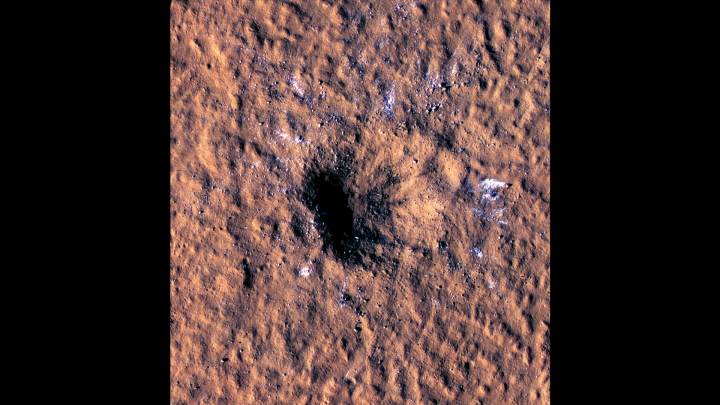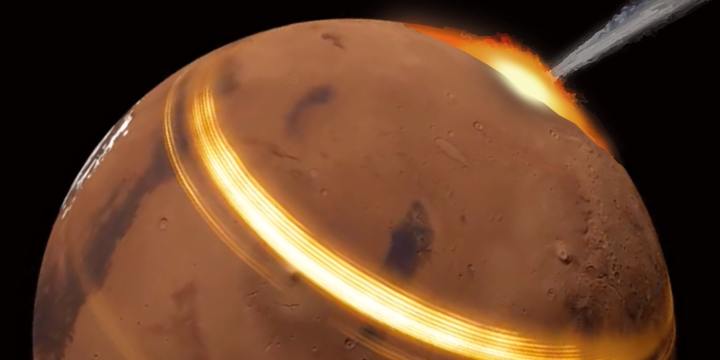One of the biggest meteor strikes ever witnessed in the solar system has been recorded by two different Mars missions. The impact caused seismic waves to shake the planet and is helping scientists to understand more about the Martian interior.
The strike occurred on December 24, 2021, and scientists had already observed its results in the form of a magnitude 4 marsquake which was detected by the NASA InSight lander. But when reviewing images of the surface collected from orbit by the Mars Reconnaissance Orbiter, researchers realized they could see an enormous crater that appeared at the same time, showing that the quakes were caused by a large impact.
“It’s unprecedented to find a fresh impact of this size,” said Ingrid Daubar of Brown University, who leads InSight’s Impact Science Working Group, in a statement. “It’s an exciting moment in geologic history, and we got to witness it.”

The meteor which struck the planet is estimated to be between 16 and 39 feet wide, and it hit the planet hard enough to create a crater that is almost 500 feet wide and 70 feet deep. As it struck the planet it exposed layers beneath the surface and threw up material that traveled as far as 23 miles from the crater, which is in the Amazonis Planitia region.
“The image of the impact was unlike any I had seen before, with the massive crater, the exposed ice, and the dramatic blast zone preserved in the Martian dust,” said Liliya Posiolova, who leads the Orbital Science and Operations Group at MSSS. “I couldn’t help but imagine what it must have been like to witness the impact, the atmospheric blast, and debris ejected miles downrange.”

The impact caused seismic waves which not only traveled through the planet’s interior but also propagated across its surface. It’s rare to observe these surface waves and they are helpful for researchers who want to understand more about the structure of the planet’s crust.
“Until now, our knowledge of the Martian crust has been based on only a single point measurement under the InSight lander,” explained the lead author of one of the papers, Doyeon Kim of ETH Zurich, in another statement.
With this new data point, the researchers were able to see that the area of crust between the lander and the impact site seems to have a higher density, while previous measurements suggested that the crust below the lander has a lower density. It could be that there are different rock types on the surface, or the rocks beneath the lander could have been created by a different process than other regions of the planet.
The research is published in two papers in the journal Science.
Editors' Recommendations
https://news.google.com/__i/rss/rd/articles/CBMiPmh0dHBzOi8vd3d3LmRpZ2l0YWx0cmVuZHMuY29tL3NwYWNlL21hcnMtbWV0ZW9yLWltcGFjdC1jcmF0ZXIv0gEA?oc=5
2022-10-29 19:17:22Z
1617691662
Tidak ada komentar:
Posting Komentar